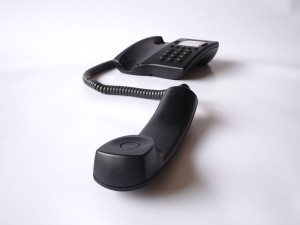Some clients ask if we do simultaneous interpretation over the phone and our answer is always “No.” There is a variety of technical and linguistic reasons for that and they all have to do with quality of services.
 Simultaneous interpretation is deservedly called the most difficult type of language interpretation. From the inception of simultaneous interpretation in the 1920s it became clear that because of a huge cognitive load even in perfect conditions fatigue builds up quickly and after 30 minutes mistakes creep in more and more.
Simultaneous interpretation is deservedly called the most difficult type of language interpretation. From the inception of simultaneous interpretation in the 1920s it became clear that because of a huge cognitive load even in perfect conditions fatigue builds up quickly and after 30 minutes mistakes creep in more and more.
Barbara Moser and co-authors in their 1998 pilot study called “Prolonged turns in interpreting: Effects on quality, physiological and psychological stress ”make a similar conclusion based on research data that “[i]nterpreters working for longer than approx. 30 minutes, the recommended turn time in simultaneous interpreting under standard working conditions, risk a decline in quality of output which appears to be due to a combination of psychological and physiological factors.”
That is in standard conditions, and over the phone interpretation is far from being standard.
While consecutive interpretation (the interpreter speaks in the pauses that the speaker makes) is possible over the phone, any phone line sound quality is not good enough for simultaneous interpretation.
 It becomes even worse if you use a webcast or a cell phone as opposed to a landline to interpret from.
It becomes even worse if you use a webcast or a cell phone as opposed to a landline to interpret from.
Add to that poor speech intelligibility, static, dropped calls, and simultaneous interpretation over the phone becomes an exercise in futility.
In these conditions quality service is impossible and we believe that any respectable translation company would refuse the assignment.
A few caveats need to be made, however.
The demand for remote simultaneous interpretation is clearly there, but current technology is still not able to support it despite various claims to the contrary.
 Large international organizations are experimenting with high quality audio remote simultaneous interpretation projects, however, results are mixed. The systems are still unable to reproduce the onsite interpreter experience and are prone to technical glitches. Even with better sound quality, using regular phones defeats the purpose of developing such systems.
Large international organizations are experimenting with high quality audio remote simultaneous interpretation projects, however, results are mixed. The systems are still unable to reproduce the onsite interpreter experience and are prone to technical glitches. Even with better sound quality, using regular phones defeats the purpose of developing such systems.
A few small startups are designing remote simultaneous interpretation systems but – because technology is not yet there – they have a very long way to go.
In the meantime, clients who crave quality have two options:
1) Switch to consecutive interpretation
2) Make a very high quality recording including video and have it translated simultaneously or have a voice over done in post-production.
 Yes, technology is developing and we hope it may be possible very soon to transmit fully ISO compliant audio and video for remote simultaneous interpretation but we are not there yet.
Yes, technology is developing and we hope it may be possible very soon to transmit fully ISO compliant audio and video for remote simultaneous interpretation but we are not there yet.
In the meantime, interpreters who attempt to do it risk elevated fatigue, non-standard working conditions, headaches, and possible hearing loss.
Not something any professional simultaneous interpreter would like to experience!
Additional Reading:
1) “Remote Simultaneous Interpreting: Options and Standards” by Cyril Flerov, December 15, 2015, ATA Interpreters Division, Blog.
2) “Remote Simultaneous Interpreting: Options and Standards” by Cyril Flerov, PowerPoint Slides of the ATA Presentation.
3) “Remote Simultaneous Interpretation Voice Frequency Analysis Based on Open Source Online Data” by Cyril Flerov

